Everyday Driving with the AWD Dodge Challenger GT
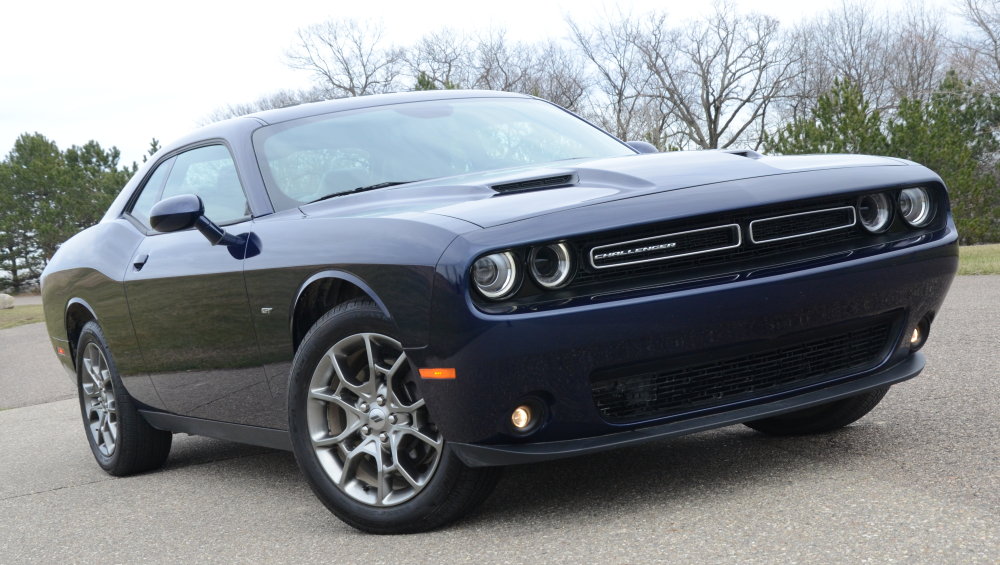
The new, all-wheel-drive Dodge Challenger GT performs better in the snow than any muscle car before it, but still feels like a proper muscle machine when driven on dry roads in warm weather.
A few months back, I traveled to Portland, Maine to experience the all-wheel-drive, 2017 Dodge Challenger GT on snow-covered roads, and on a snow-covered race track. As the first-ever all-wheel drive, 2-door muscle car, Dodge wanted us to drive the car in a situation where it offered the most distinct advantage over its rear-wheel drive counterparts. After spending a day on roads that would have been impassable to your average rear-drive Challenger, it was clear the new GT package is the best option for someone looking to drive their Mopar muscle car all year long.
However, even if you live in an area of the U.S. that gets the most snowfall, the odds are good that you will spend far more time driving in warm weather on clear, dry roads. It’s an important selling point for the Challenger GT to be great in the snow, but it’s just as important that it drives great in the middle of summer as well.
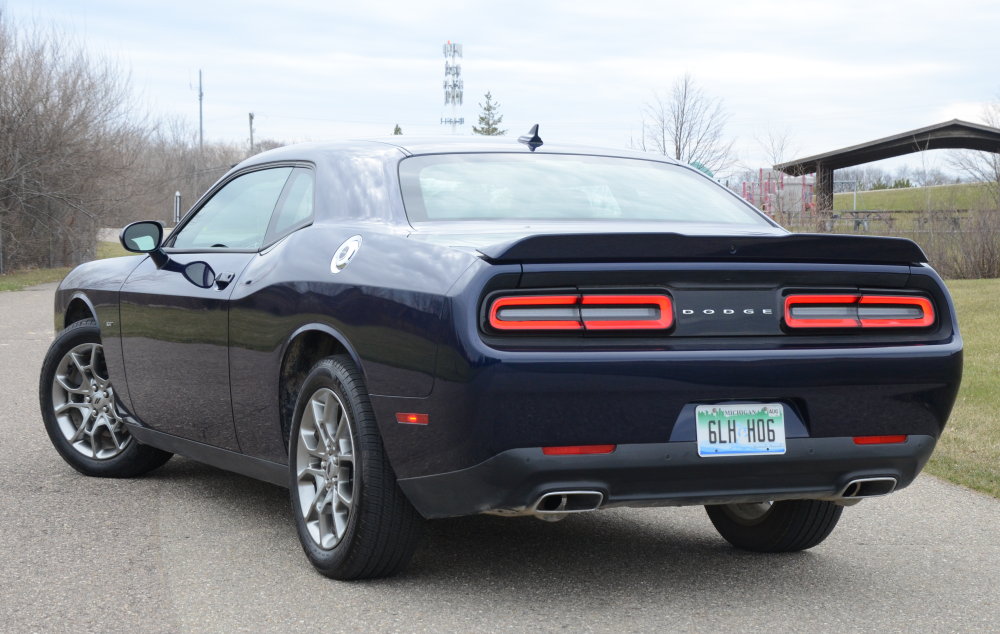
Fortunately, Dodge did a great job of balancing the capabilities of all-wheel drive with the rear-drive feel that Challenger buyers expect.
A Loaded Interior
Before getting into the driving dynamics of the 2017 Dodge Challenger GT, let’s talk about the interior. The GT package comes with a much longer list of standard features than the base-model Challenger SXT on which the AWD package is based. The Challenger GT comes with a loaded interior chock-full of premium features, including heated/cooled leather seats; a heated steering wheel with shift paddles and sound system controls; the premium UConnect infotainment system with the Dodge Performance Pages App; the reconfigurable driver information center; dual-zone automatic climate control; push-button start, and leather trim scattered throughout the cabin.
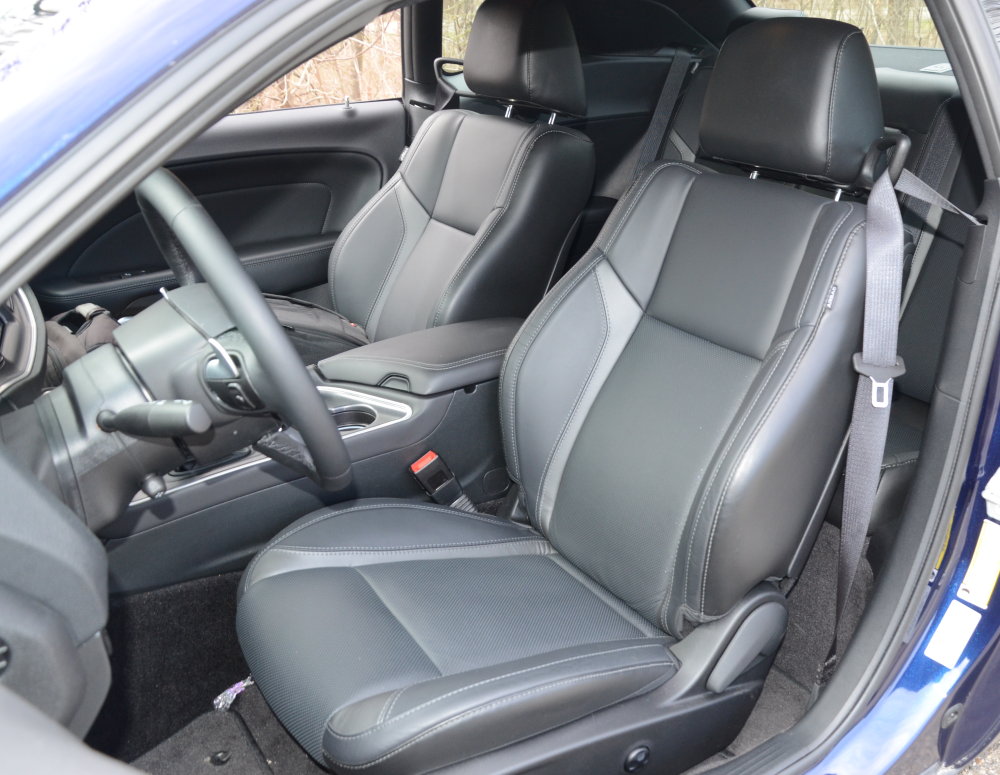
My Challenger GT test car was also equipped with a few premium options, including the sunroof, navigation and the 18-speaker Harman Kardon sound system, all of which work with the standard features to create a premium feel in what is technically a base-model Challenger.
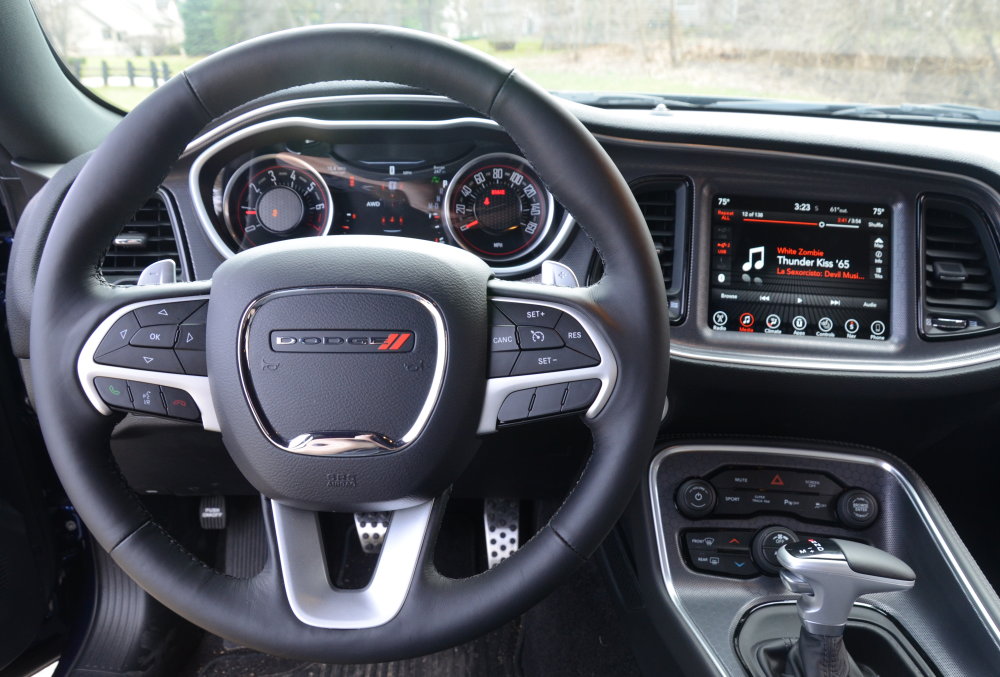
The Challenger GT was engineered to be a great daily driving muscle car year-round, and the cabin is one that you will look forward to every day as it leaves you asking for very little, if anything.
Challenger GT Dynamics on a Warm, Sunny Day
When I first drove the 2017 Dodge Challenger GT, it was in frigid temperatures the day after a massive snowstorm, and while we drove for hours, none of the roads were dry. With the exception of some highway driving, all of the roads were buried in snow as well. Because of that, we were able to experience the AWD system to the fullest of its abilities. I was impressed with how well the Challenger GT maintains the rear-drive feel when driving with all-wheel drive in deep snow.
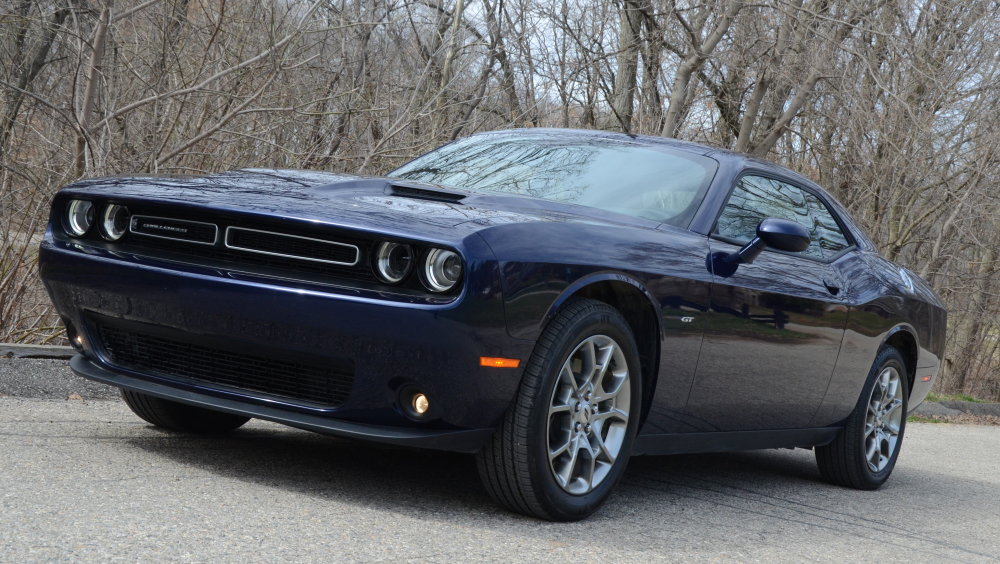
At the same time, with the AWD system automatically engaging when temperatures are below freezing, the car was in AWD mode literally all of the time, so we had no chance to experience the rear-drive mode. When I received the Challenger GT test car more recently, it was in Michigan with clear roads and temperatures in the low 50s, so I was able to get a feel for how the car performs when AWD is not always engaged.

In AWD mode, the Challenger GT offers a fairly consistent rear-drive bias, with more power being sent to the rear wheels. But when the car is not in Sport mode, and the temperatures are warmer, the car stays in rear-drive mode until AWD is needed (i.e., when the traction control system engages). There is a drive mode screen in the gauge cluster so the driver can see whether the car is in RWD or AWD. When in RWD mode, the AWD doesn’t engage very often. It will kick in automatically when wheelspin is detected, so you can’t do any burnouts with the Challenger GT like you might with the similarly-powered Challenger SXT. That might be the biggest downside to the AWD system. You can lock it in by turning on Sport mode, but there is no way to lock the car into rear-drive mode.
Fortunately, when driving in AWD mode, the rear bias is great enough that you can kick the back end out like you would with a car that only has rear-wheel drive. This is also true of RWD mode. Even though the AWD system automatically engages when it detects wheelspin, it will allow the tires to spin enough to get the back end kicked out a touch before moving power to the front wheels.
For example, when you pull out of a parking lot at cars and coffee with the Challenger GT, and you floor it, the rear wheels will spin even if the car is in Sport mode and the AWD system is engaged. The back tires will spin a bit, and the car will kick out a touch, similar to a rear-drive car. But after a second or so, the AWD system applies more power to the front wheels, less power to the rear wheels, and snaps the car back straight. Really, something like this would be ideal for all of those Mustang owners who crash leaving car shows, as the AWD Challenger GT will spin the tires a bit, but not enough for the driver to lose control and spin into the crowd.
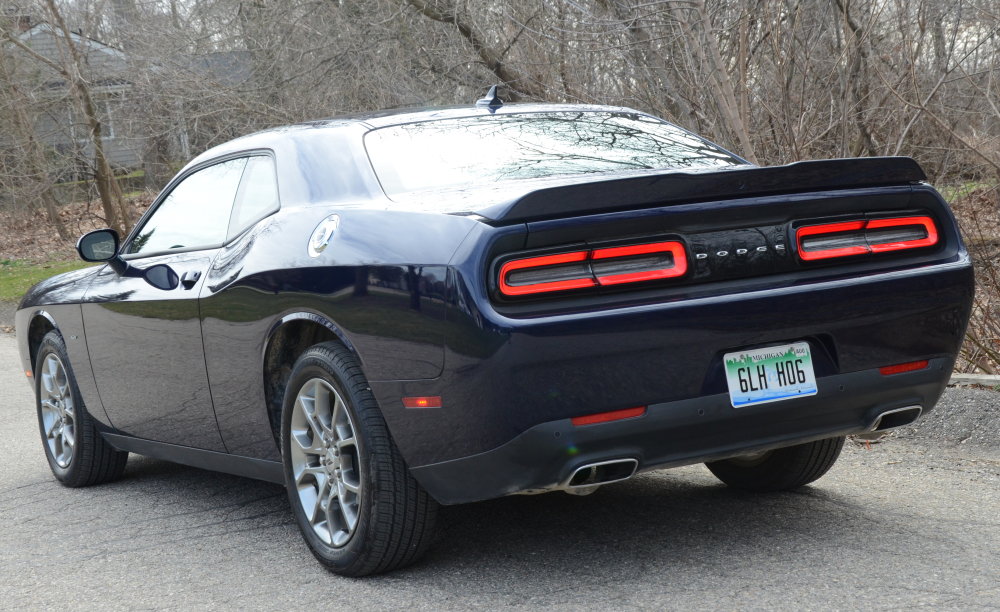
That same oversteer feel is present during spirited driving situations as well. When you’re pushing the Challenger GT hard through a series of tight turns, the rear-power bias is evident. In fact, on long, sweeping turns such as a big roundabout (or turning circle, if you prefer), the AWD Challenger will overpower the rear wheels and cause the car to “drift” a bit. But the AWD system will reel you back in before you can really get the car sideways.
With many all-wheel-drive cars, they are based on front-drive platforms, so they feel more like front-wheel-drive cars. But the AWD Dodge Challenger GT drivetrain is set up to deliver the rear-drive feel as much as possible, only shifting away from the rear bias when it’s absolutely necessary. This allows the Challenger to feel like any other V6 Challenger in most driving conditions, while quickly righting the car should the driver get the rear tires spinning and/or sliding.
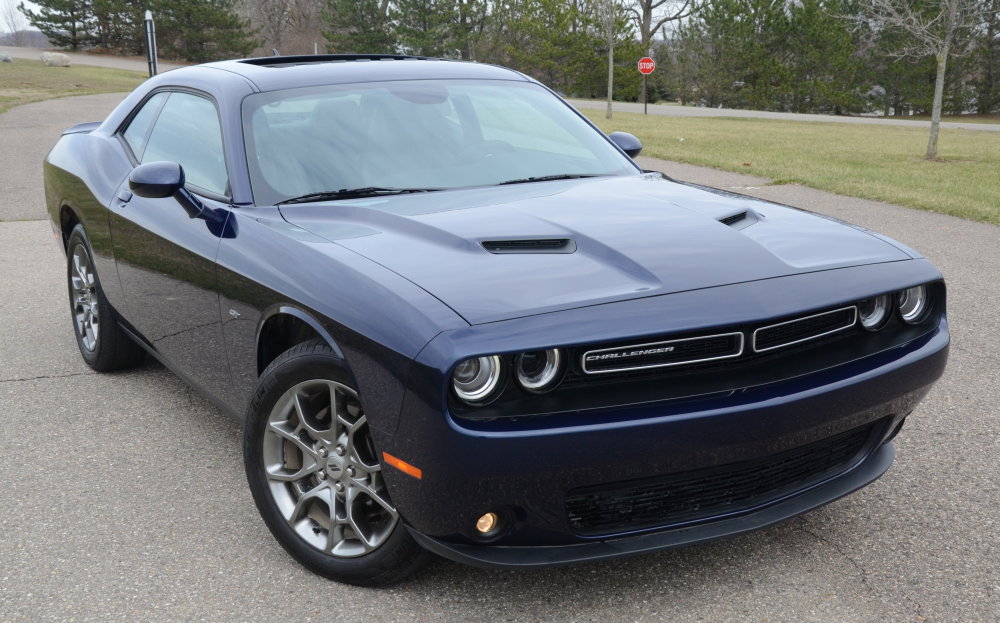
In addition to having a similar acceleration feel to your average, rear-wheel-drive Challenger SXT with the same V6 engine and 8-speed transmission, the Challenger GT offers comparable handling in most situations. The AWD package sits just a skosh higher than the regular V6 models, so there is a bit more body roll. But unless you’re pushing the car right to the edge of its limit, the handling difference isn’t noticeable. Whether you’re zipping along a twisty country road, or taking highway turns at higher speeds, the Challenger GT is as smooth, stable and planted as the non-AWD model, while also offering impressive ride quality.
The suspension and steering system give you just enough feel for the road while muting most of the bumps and inconsistencies. Someone who is focused on getting a comfortable daily driver will almost surely prefer the ride quality of this car over the vast majority of the options in the muscle car segment.
Honestly, I would go so far as to say that if you removed the driver information screen from the gauge cluster and had 10 random people drive the Challenger GT on a nice day, most of them wouldn’t recognize it’s an all-wheel-drive car because it maintains the basic feel of the RWD Challenger so nicely.
In terms of performance, the Challenger GT is based on the base-model V6 Challenger SXT, so the standard engine is the 305-horsepower Pentastar V6. This is the least-powerful engine in the Challenger lineup, but thanks to the on-board timing system, which is standard with the GT package, I was able to record quarter mile times in the 14.6 range. Again, that isn’t blisteringly fast by any stretch, but the Challenger GT is meant to be a sporty car that you can drive year-round in any climate, and with the ability to run mid-14s in the quarter mile, it will outrun many of the cars on the road today (just not the V8 Mustang cars).
Driving the Challenger GT in the Mud
In addition to logging heavy miles on paved, clear roads, I also put a few miles on the Challenger GT on our local “natural-beauty roads”. That’s what the Michigan road commission calls a road they’re too cheap to pave. My area is ripe with these rough, messy roads. This time of year, these paths end up more like rocky rivers of mud, but they serve as great testing areas for AWD/4WD trucks and SUVs. In this case, these muddy roads presented an interesting challenge for the 2017 Challenger GT.
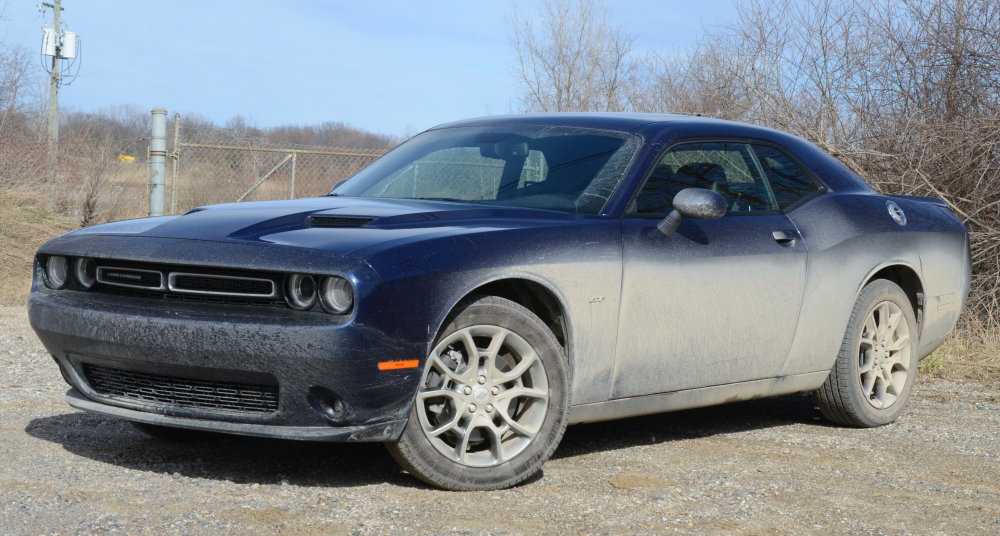
While the Challenger GT does sit a bit higher than the RWD Challenger SXT, it still has a low-reaching front fascia, and a relatively low stance, so when driving on my rough local roads, I drove much slower than I would have with a truck or SUV. While the suspension felt up to the task of rambling down these rough roads, I suspected the car would easily bottom out, or worse, catch the front fascia. Because of that, I’d recommend GT owners avoid blasting down rough roads, but in terms of handling slippery, muddy roads, the AWD system continued to impress.
There were a few points in the road where the melting snow had created little lakes of mud at the bottoms of large hills, making for slick surfaces. My own rear-wheel-drive pickup has to sling some mud to get up some of these hills in this condition, so I was curious to see how the AWD Challenger would handle the slop. Unsurprisingly, it made short work of the slippery slopes, so while I’d be careful on rough roads with deep grooves or potholes, I wouldn’t hesitate recommending this car to someone who’s forced to spend lots of time on muddy roads.
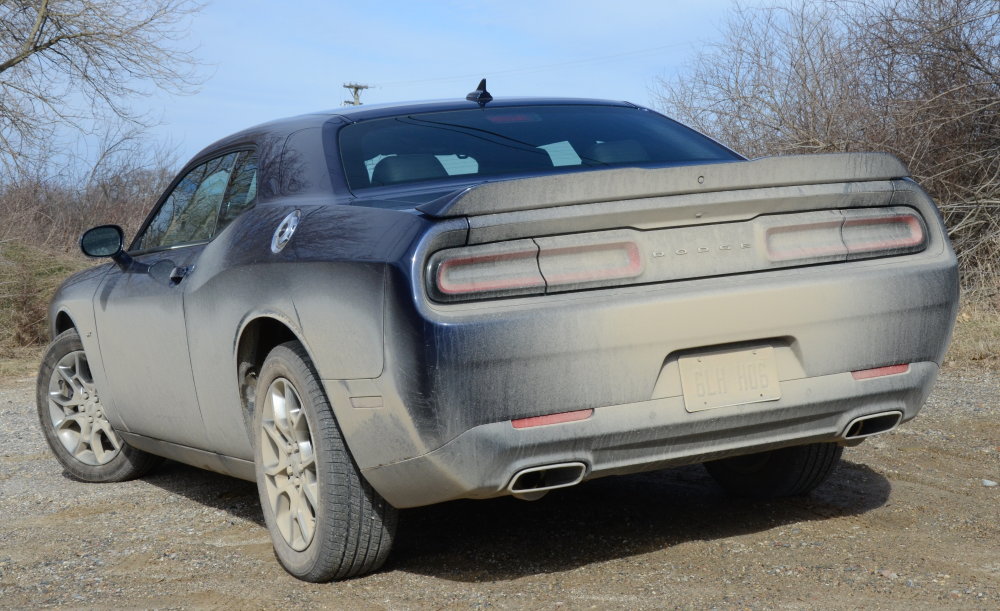
In the end, if you’re shopping for a new 2-door muscle car that will conquer the roughest road conditions all year long — even in areas that get heavy snowfall — the 2017 Dodge Challenger GT is a great option. The AWD system makes this car a beast in deep snow and deep mud, but the most important aspect is that the advanced all-wheel drive system, and the rear-bias allows the Challenger GT to feel like a proper rear-drive muscle car even when the all-wheel-drive system is engaged.

When you add the premium interior into the equation, the Challenger GT really is an awesome package for someone who is less concerned with all-out performance, and more concerned with the ability to drive and enjoy their car year-round. You can’t do burnouts, but in every other way, the Challenger GT performs and feels like the rear-drive Challenger SXT, so having the versatility of AWD will not butcher the driving dynamics that you would expect from a modern muscle car.












